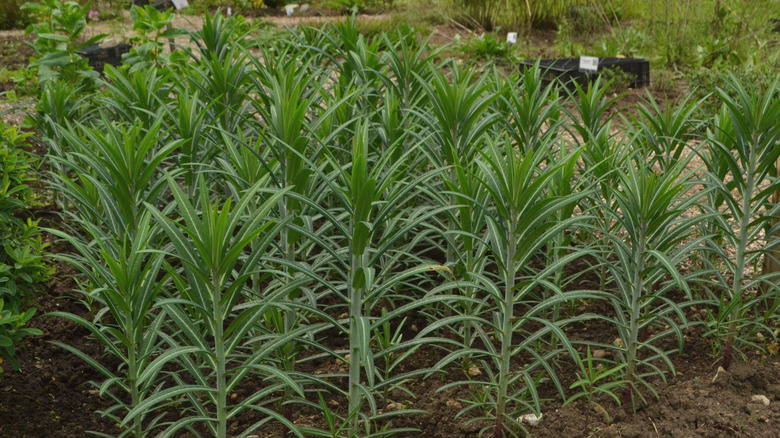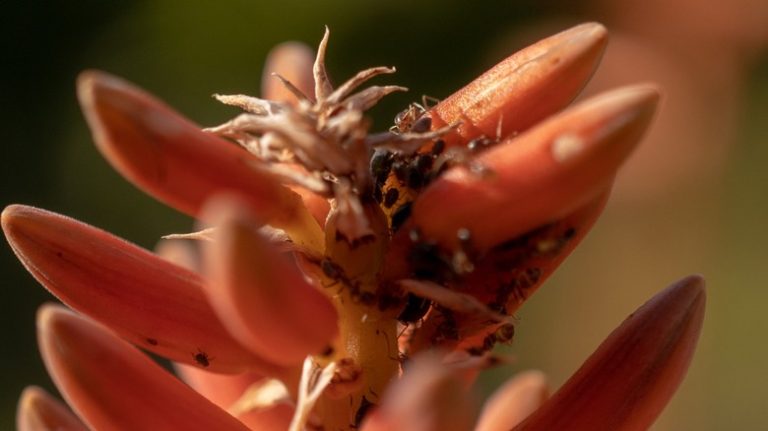The mole plant, also known as Caper spurge and Euphorbia lathyris, has long been considered a natural deterrent against mice and moles—hence its common name. However, it’s crucial to debunk this myth right at the outset: the mole plant is not an effective means of repelling these garden pests. Some have said that the plant emits a scent that moles find intolerable, while others claim that its poisonous roots keep these critters at bay. But scientific evidence supporting these claims is scant, making the mole plant a less-than-reliable option for mole control.
Now, why would you want to rid your garden of moles in the first place? Moles may appear harmless — even cute to some — but they’re anything but benign in your garden. These animals are industrious diggers, creating an extensive network of tunnels as they hunt for worms and other food. In doing so, they disturb the soil, disrupt plant roots, and leave your lawn covered in unsightly mounds of earth, commonly known as molehills. These disruptions can cause significant aesthetic and structural damage to your garden.
Therefore, moles are a significant nuisance, and effective control is frequently necessary. However, the mole plant is not your ally in this endeavor. Contrary to folklore and gossip, the plant won’t solve your mole problem and, in fact, can be dangerous since it’s toxic. There are more effective, scientifically backed methods to keep moles at bay.
The toxic nature of the mole plant

The mole plant, originating from southern Europe and western Asia regions, stands out with its eye-catching blue-green leaves and unique, somewhat cone-shaped structure. This herb can grow as an annual or biennial plant, but don’t let its visual appeal fool you. The plant is hazardous, particularly its milky sap, according to the North Carolina State Extension. Touching this sap can result in various issues, from skin irritation to nausea and vomiting. It’s even potent enough to cause temporary blindness if you get it in your eyes.
But it’s not just a human hazard; it’s also a threat to animals. Take goats, for example. If they munch on this plant, their milk becomes dangerous to consume. The mole plant also boasts incredible adaptability, thriving in various environmental conditions. It reproduces rapidly and has seeds that remain active in the soil for extended periods. Once those seeds mature, they disperse rather aggressively, further amplifying the plant’s invasive qualities.
Because of these features, it’s no surprise that the mole plant has earned the label of a noxious weed on a global scale. In some places like New Zealand and specific parts of Australia, authorities have even outlawed its cultivation. This speaks volumes about the plant’s ability to cause harm and disrupt ecosystems, which is why it’s crucial to exercise caution and be well-informed if you ever encounter it.
Better ways to deter moles

So, what’s your best option for keeping moles at bay if the mole plant is off the table? Their primary cause of damage to gardens is their search for food, specifically soil-based insects. One effective plant-based repellent is marigold. Marigolds produce a unique aroma and contain natural pyrethrins. Pyrethrins are a type of organic compound extracted from chrysanthemum flowers, and they are excellent at repelling soil-dwelling insects — the main food source for moles. In addition to planting marigolds, consider reducing food sources for moles in other ways. Using insecticides to control beetle grubs, a favorite mole snack, can be effective. However, you should use insecticides judiciously, considering the potential impact on other beneficial insects.
Another deterrent is to install underground fencing, although it is labor-intensive. For optimum results, the fence should plunge 24 inches into the soil and rise 6 inches above the ground. This dual height should block both burrowing and above-ground movement. Commercial mole repellents also offer a quicker but chemical-laden alternative. Before going this route, balance the convenience against the potential impact on your plants and soil. The end game is to make your garden less appealing for moles by cutting off their food source. Combining these methods increases the likelihood that moles will migrate elsewhere to find a more hospitable, food-rich environment.
